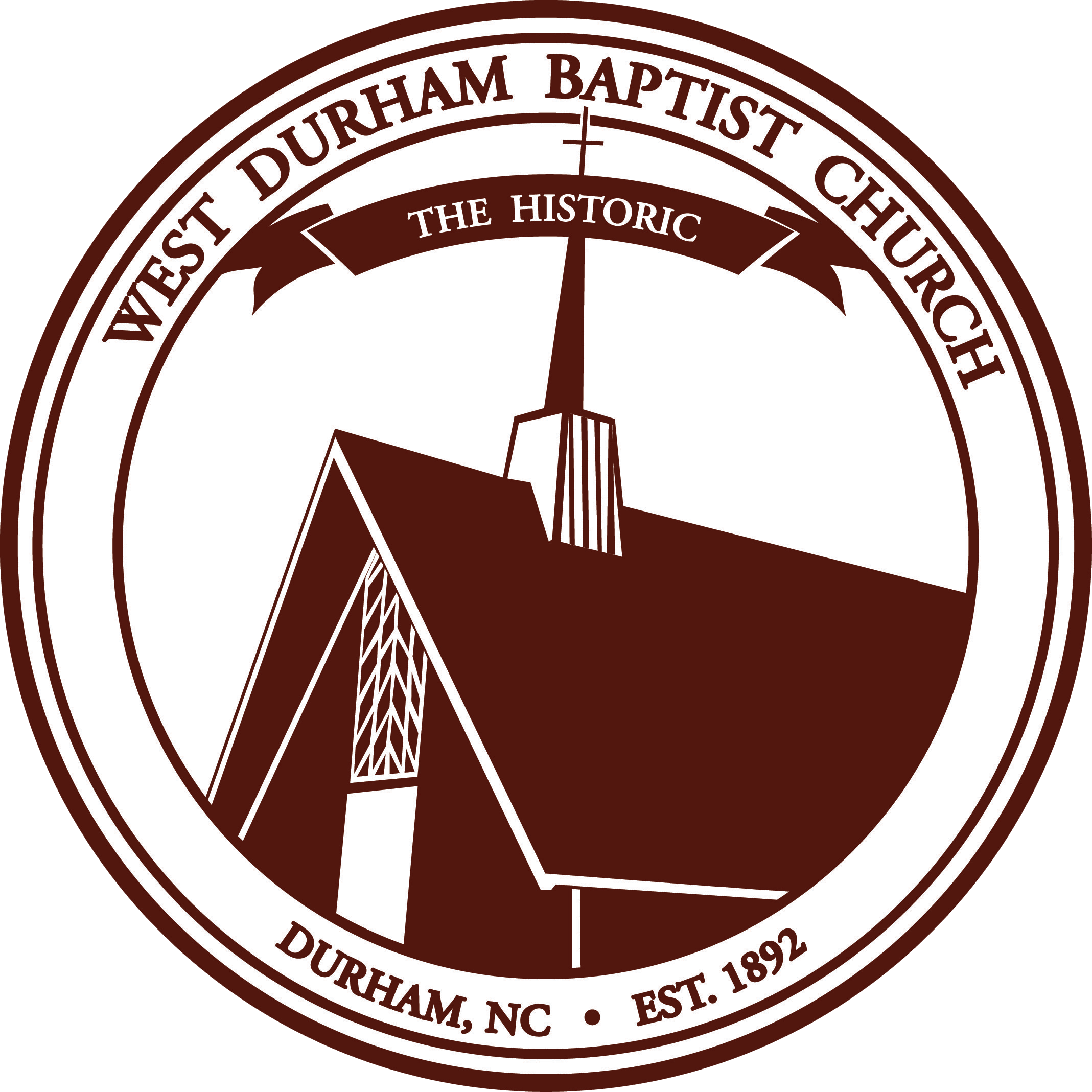West Durham Baptist Church—Fifty Years at 1901 Athens Avenue
The following “imagined introduction” is based on conversations and memories of members of West Durham Baptist Church who helped the church to transition from Thaxton Avenue to Athens Avenue:
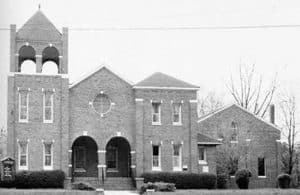
It was the final gathering at the Brookstown church. Members of the congregation had arrived early for the motorcade that would take place
after a final word of prayer. The church bell had been rung for the final time.
was bare. All the tables, all the funeral home-donated hand fans and all the vestibule bulletin boards had been removed.
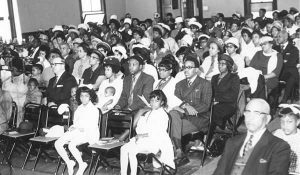
This was Sunday morning, April 19, 1970.
Deacon Wanzie McAuley asked those gathered to bow their heads for the final prayer. Pastor Frederick Terry offered a powerful prayer that probably conjured up the founding of the church in 1892, which was just one generation after Emancipation. Rev. Terry probably mentioned the joys and the sacrifices that had gone into the church’s 32 years of worship on Ferrell Street and the 46 years of worship on Thaxton Avenue.
After Rev. Terry asked for traveling mercies for the crosstown journey, perhaps it was Sister Pearlene Scarborough who led the congregation in the singing of the old hymn that is used for many benedictions, “Blessed Be The Ties That Bind.”
Perhaps it was Trustee Eugene Harrington, a public-school teacher and athletic coach, who gave the motorcade instructions and the travel itinerary from Thaxton Avenue to Athens Avenue.
“Please make room in your cars for those who walked today.”
“Please turn on your headlights as we travel through town.”
“The sheriff’s squad car is going to lead our procession of automobiles.”
“We are going to leave the church, travel down Thaxton Avenue until we get to Spring Street. Then we are going to turn onto Milton Avenue.”
“We will turn left onto Chapel Hill Street, go pass The Mutual and follow it to Pettigrew Street”
“We will then follow Pettigrew until we get to Speight’s Corner on Fayetteville Street.”
“Follow Fayetteville Street to Lawson Street. Turn left at Lawson near the BN Duke Auditorium.”
“Go thru the NCC campus and turn right at Chidley Hall onto Alston Avenue.”
“Finally, we will turn left onto South Alston Avenue and follow the lead car to Nixon Street. Nixon will take us right to our new church.”
Let Us Remember April 19, 1970
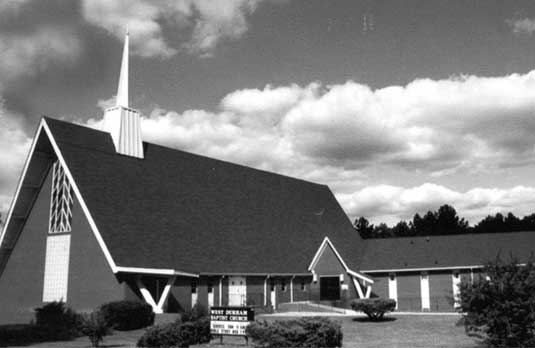
April 19, 2020 marked the 50th anniversary of the first official worship service at the Athens Avenue site of West Durham Baptist Church. A great deal of gratitude goes to all the folks who contributed recollections and artifacts that allow us to provide this retrospective narrative.
The calendar years of 1970 and 2020 are almost perfect matches. Of course, 1970 was not a leap year and 2020 has a leap day in February. Therefore, after February 29th of this year, the days of the week match those of 1970 perfectly. Thus, April 19, 1970 was a Sunday and this year on April 19, 2020 was also a Sunday.
Political Background
Due to governmental necessity, fifty years ago, in April of 1970, the congregation of West Durham Baptist Church had to make a monumental geographical move to another section of the city. The church, which was founded in 1892, and most of the beloved Brookstown community, were forced to relocate to accommodate what is now called Highway 147 or the Durham Freeway.
In a 1962 citizen’s referendum, the voters of Durham approved bonds for urban renewal and the building of an expressway that would link the Research Triangle Park to the regional interstate highway systems. The business district of Hayti and the neighborhoods of Brookstown and Hickstown bore the burden of disproportionately providing the physical space for this “expressway project.”
Brookstown
The uprooting of the Brookstown community presented an economic and emotional hardship for the residents and for the church families of West Durham Baptist Church and Mt. Olive AME Zion Church. Many memories of these two church buildings still linger. WDBC and Mt. Olive, which were on opposite hills within Brookstown, were the anchors of the community. Although WDBC’s initial location was on Ferrell Street, a more modern building was constructed a few blocks away on nearby Thaxton Avenue. That church building was occupied in 1924.
Although several members of the congregations commuted into Brookstown for Sunday services, weekday rehearsals, and church meetings, most members walked through the community to attend West Durham and Mt. Olive.
Where was Brookstown? The current expressway runs through it. If you can imagine the space between the Chapel Hill Street exit and the Swift Avenue exit, then you can get a strong feel for the geographic location of Brookstown. Also, Brookstown sat in much of the space between the East and the West campuses of Duke University.
In conversations with several WDBC members who lived in Brookstown, faces light up when discussions mention street names like Thaxton, Ferrell, Maxwell, Wilkerson, Gattis, Powe, Spring, Milton, and others. Folks still fondly remember Clyde Compton’s Store, Gertrude’s Store, Woodrow’s Store, Mac’s Hot Dog Stand. In fact, the Gunn family of WDBC was intricately involved in the ownership of Mac’s Hot Dogs.
Former Brookstown residents remember their parents attending West End School, which, along with Whitted and East End, was one of the three earliest schools for Negroes in Durham. That West End School was located on Ferrell Street. Around 1937, Brookstown students started attending the new Lyon Park School. The building that once housed the West End School became the supply depot for the Durham City Schools.
Many folks remember their parents working at American Tobacco, Liggett and Myers Tobacco, Erwin Mills, Fitzgerald Brickyard, Duke University, McPherson Hospital, and the Durham Schools. Several barbers, beauticians, and other small businesses operated in Brookstown. Although, many of the adult women and men were a part of the domestic workforce, Brookstown was a community of professional, business, and blue-collar citizens. Homeowners and renters formed a mutual co-existence.
Many of the pioneers of Durham's civil rights struggle for public accommodations and for school integration came from Brookstown.
Above all else, citizens of Brookstown and members of West Durham Baptist built a community of strong families, supportive relationships, and friendly outreach.
The Necessity to Relocate
After the 1962 voter referendum was approved, the handwriting was on the wall. Brookstown was in the “crosshairs” of the expressway plans. After an initial period of mourning and handwringing, the churches and the community put forth positive plans.
Seeing the need for innovative vision and leadership, West Durham Baptist Church met the challenge to seek a new location and to construct a new building. The church body held numerous meetings and heard many proposals about land availability, the financial aspects of eminent domain settlements, and the pressure of timelines.
With tremendous input and discussion by every ministry of the church, a site in the Campus Hills area in eastern Durham was selected. However, with this land site agreement, a fierce dialogue arose about the possibility of the geographic confusion that might arise if the church was no longer located in the “western” portion of the city. Even so, the congregation adamantly decided that the name, “West Durham Baptist” would follow the church to a different geographical section of town. Looking back a half century later, that was a very courageous and “historic” decision.
Deacon Wanzie McAuley, who was a master building contractor, Pastor Fredrick Terry, the other men and women leaders of church ministries are viewed as the masterminds of the relocation search, the acquisition of land, and the building of the Athens Avenue structure.
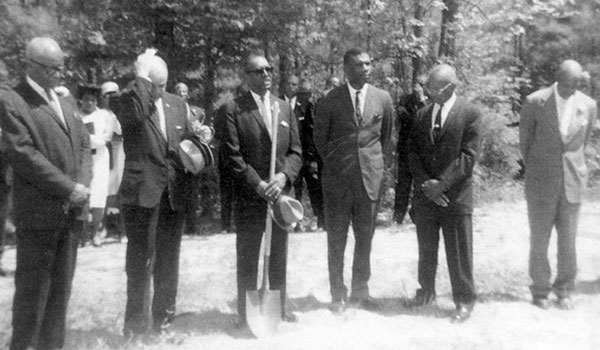
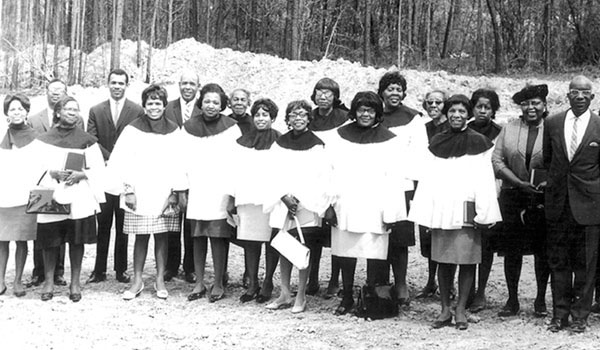
On Sunday, April 13, 1969, a groundbreaking ceremony was held at the Athens Avenue site. After worshiping on Thaxton Avenue, the congregation drove across town to symbolically shovel soil to show that the work on the new church was officially beginning.
The company that won the contract for the building was Tierney Construction Company of Winston-Salem. Upon the insistence of Rev. Terry, several WDBC youth were hired by the Tierney Company to work at the construction site. Adrian Neely, Marshall Thaxton, Ronald Scarborough, and Richard Lyons can boast that they literally helped to lay the foundation and helped to build the Athens Avenue church during the summer of 1969. Within the walls of the Fellowship Hall is a tubed note that was signed by these young men indicating that their valued work helped to build our wonderful church.
As the calendar moved from 1969 to 1970, construction concluded, proper permits were obtained, and the congregation eagerly looked forward to its new home on Athens Avenue. Moving the pews, the pulpit, and all the precious religious items became the next challenge. The pews were not moved until after Easter Sunday service on March 29, 1970. For the final service on Thaxton Avenue, almost all the items had been moved. The congregation sat in folding chairs for that final Brookstown service on Sunday, April 12, 1970.
So … this summary brings us to the Sunday, April 19, 1970 service on Athens Street … 50 years ago today.
Fifty Years of Pastoral Leadership on Athens Avenue
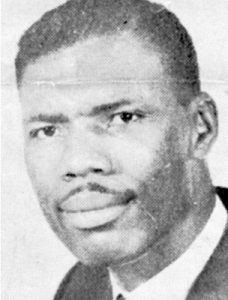
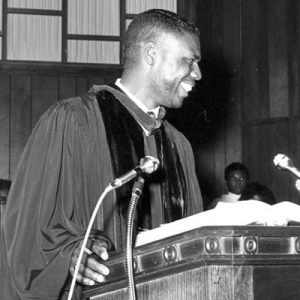
Rev. Dr. Frederick D. Terry, who had been the senior pastor
at the church since 1965, delivered the sermon on Sunday,
April 19, 1970.
West Durham Baptist Church on Athens Avenue has been shepherded by several other pastors over the past 50 years:
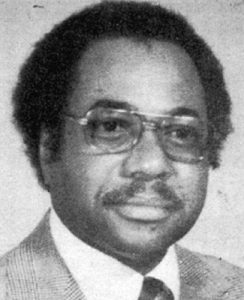
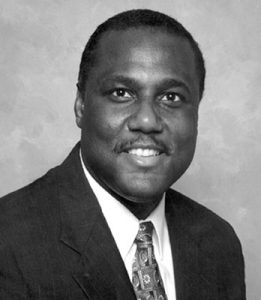
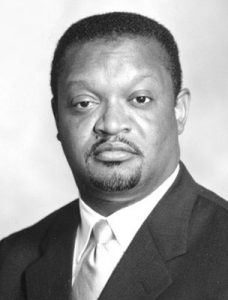
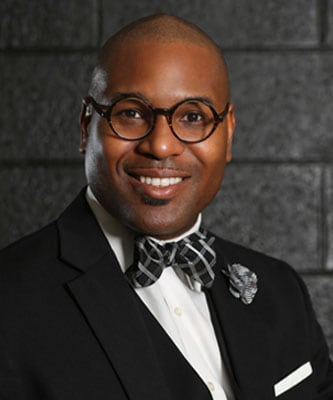
The Historic West Durham Baptist Church is abundantly pleased to have recently
celebrated the third anniversary of our current senior pastor:
Reverend LaMont Josiah Johnson, Sr., Ph.D.
Acknowledgements
The above compilation of information was culled from generous conversation, priceless photos, and precious time with Laura Robinson, Boyd Taylor, Pearline Scarborough, Cora Cole McFadden, Virginia Jackson, Barbara Lassiter, Irma Laney, Bertha Wiggins, Henry Gunn, III, Joshua Gunn, Dottie Lee, Annetta Hardnett, Harriette Davis, Otto VanHook, Gladys Watson, Clyde Thomas, Marshall Thaxton, Naomi Atwater, Adrian Neely, Margaret Neely, Thomas Kincy, Pearlie Lewis, Elna Smith, Eddie Davis, and many others.
Article thoughtfully written by Brother Eddie Davis.
